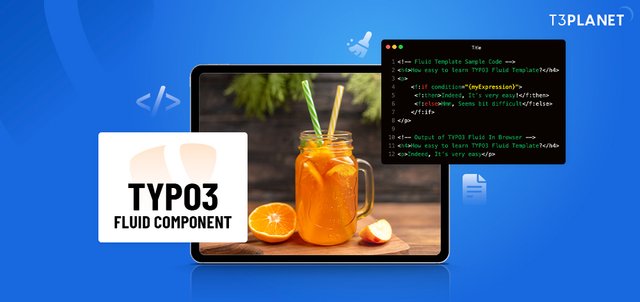A Developer's Guide to TYPO3 Fluid Component: Modern Web Design Recipes
Fluid 4.3 introduces TYPO3 Fluid Component , revolutionizing frontend development with a modern, maintainable, and reusable approach for TYPO3.
Why Fluid Components are Superior to Partials
Fluid Components provide a more structured and powerful approach compared to traditional partials:
Fluid Components vs React
Fluid Components are server-side components that work within TYPO3’s Fluid templating engine. Unlike React, which operates primarily on the client side and uses unidirectional data flow, Fluid Components are easier for developers already familiar with Fluid’s templating syntax. Fluid Components focus on server-side rendering and data handling using template variables and context, offering a smoother experience for TYPO3-based projects.
How to Get Started with Fluid Components
To integrate Fluid Components into your TYPO3 setup:
- Ensure your system is running TYPO3 v13+ and Fluid 4.3+ via Composer.
- Create a Component Collection class to organize where your components will reside.
- Start using Fluid Components in templates by importing the namespace and adding the appropriate custom tags.
Examples of Fluid Components
Best Practices for Fluid Components
Advanced Fluid Component Features
Fluid Components provide enhanced IDE support with autocompletion and validation features. The latest versions also offer better debugging tools and performance improvements, such as caching enhancements that improve loading speeds and overall site performance.
Migrating from Partials to Fluid Components
Future Enhancements for Fluid Components
The TYPO3 community plans to continue improving Fluid Components by enhancing support for IDEs, optimizing performance further, and integrating them more deeply with the TYPO3 backend. These improvements will make working with Fluid Components even more efficient and user-friendly.
Conclusion
Fluid Components represent a significant advancement in TYPO3 frontend development. They enable developers to build scalable, modular, and maintainable projects with ease. By replacing traditional partials with Fluid Components, TYPO3 developers can create more organized, reusable code that enhances the performance and scalability of their websites.
